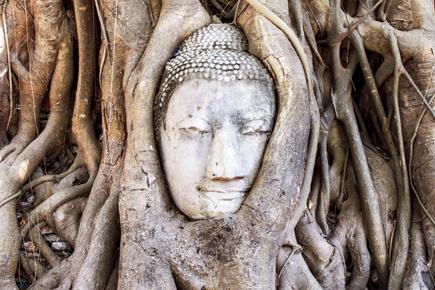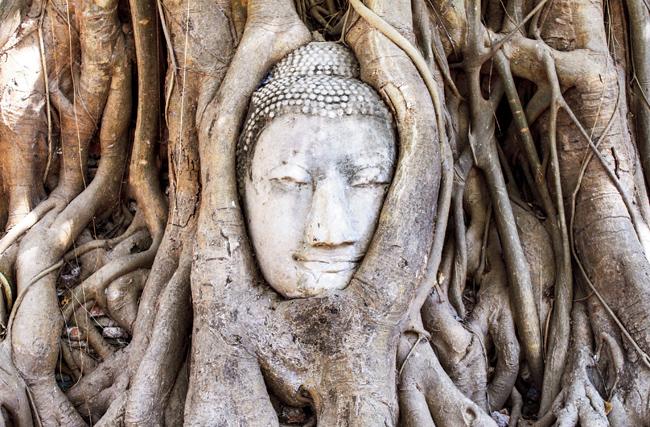Retired professor Maruti Nandan Prasad Tiwari will be delivering a lecture on eco-friendly ancient Indian art and its social relevance today

Mumbai Guide, Retired professor Maruti Nandan Prasad Tiwari, eco-friendly ancient Indian art, Lord Buddha, Bodhi tree
Every festival is celebrated with much fervour in India, though the relevance of several rituals involved gets lost amid the fanfare. One example is the celebration of Ganesh Chaturthi, and Navratri (being observed now), the aftermath of which leads to water pollution due to the immersion of idols and paraphernalia, which naturally, isn’t eco-friendly.
ADVERTISEMENT

Lord Buddha was said to have attained nirvana under the Bodhi tree
These practices contradict essential teachings and cultures, which have been handed down over the years in India. Maruti Nandan Prasad Tiwari (retired professor and head, department of history of art, Banaras Hindu University) will discuss the social relevance of eco-friendly ancient Indian art in today’s times.
“Art is a visual manifestation of happenings of any culture and religious texts. It aids the process of interpretation. The concept of being eco-friendly today is about taking conscious measures and actions. The concept of being one with nature and respecting it was always an integrated topic through our deities,” says Tiwari.
Tiwari states the example of how the Hindu goddess of prosperity, Laxmi, sits on a lotus and is flanked by elephants. Also, like several other deities her vahana (vehicle) emerges from the animal world, an owl. “Laxmi, the woman, turns into the goddess of prosperity when she is depicted with these symbols. Similarly, Kamadeva is identified with his five arrows, which are made of five different flowers and his bow is made of sugarcane. Every deity is associated with flora and fauna and through them we learn to respect nature and not just the creature or the tree, objectively,” he asserts.
Tiwari says that this inclusion is also seen in Buddhism and Jainism where deities attained complete knowledge (nirvana) while meditating under particular trees. “Today, the value of plants such as tulsi, neem, peepal has been scientifically proven,” says Tiwari.
In today’s scenario, Tiwari says that it is the interpretation that has skewed beliefs, and traditional literature has always insisted that man can only survive while being one with nature and preserving it. “The Atharvaveda says that nature is sustained for our existence. To sustain ourselves we cannot go against nature and damage it as it goes against mankind. If you observe early art and statues, they were made of stone and terracotta, which is the opposite of what we see today,” he reminds us.
 Subscribe today by clicking the link and stay updated with the latest news!" Click here!
Subscribe today by clicking the link and stay updated with the latest news!" Click here!






